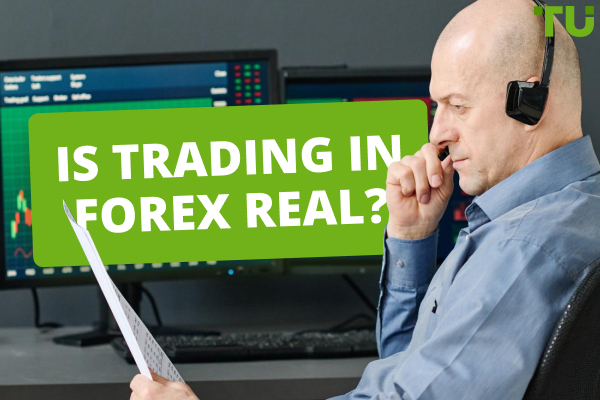How Do Volume Indicators Work In Forex?
Best volume indicators is as follows:
-
Tick Volume. Available on МТ4.
-
Real Volume. Classic volumes that have been used since the beginning of the 20th century.
-
Delta and Bid Ask. An indicator that breaks volumes down into buys and sells.
-
Volume Profile. Horizontal volumes.
-
Depth of Market. Limit order volumes.
Trading volume analysis is an intrinsic part of successful trading and an important part of technical analysis. Understanding how volumes interact with asset prices can be a significant advantage for traders, helping them predict price changes based on the actions of market participants. However, interpretation of volumes is not a simple science.In this article, I will consider 6 volume indicators that I find best for analyzing balances between supply and demand, and making informed predictions about price action. These tools include both traditional analysis methods and new technological solutions that provide deep, multilevel analysis of market activity.
-
Does MT4 have volume indicators?
Yes, it does. Select Insert > Indicators > Volumes. Volumes are displayed on charts as histograms. However, they are not real, but tick volumes that show the number of price changes per unit of time.
-
Can you check volume in Forex?
Strictly speaking, you can’t because Forex is a decentralized interbank market. Regular retail traders don’t have access to data for detailed analysis of real volume.
-
What is the real volume indicator in Forex?
As a working alternative, you can use real trading volumes of currency futures contracts on the Chicago Mercantile Exchange (CME) – this market clearly correlates with the spot Forex market.
-
Is the volume indicator leading or lagging?
This indicator is updated in real time. In fact, volume neither predicts the future, nor averages past data. It’s a statistical metric that reflects trading activity and can be very useful when analyzing the markets.
-
What do volume dynamics show?
A stable increase in volume indicates trading interest in the asset and, as a rule, confirms the trend direction. A sharp increase guarantees speculative volatility. Small volumes indicate that the asset is low liquid.
How to use volume indicators in Forex
The law of supply and demand is the basic logic that explains why prices change in any market, including Forex, stocks, and cryptocurrencies.

Volumes, an intrinsic part of the law of supply and demand
Volume analysis is the key to understanding the changes in supply and demand balance in real time. By assessing trading activity at different price levels, readers of volume indicators can imagine where the equilibrium price should be or, in other words, find the price’s path of least resistance.Thus, volume analysis helps determine the direction in which the market is more likely to move.
Best Forex brokers


My top 6 best volume indicators for Forex trading
On Balance Volume (OBV), Volume Price Trend (VPT), and Chaikin Money Flow (CMF) are often called some of the best, but I don’t have a lot of experience in using them and therefore will provide my own version of the 6 best indicators:
-
Tick Volume. Available on МТ4;
-
Real Volume. Classic volumes that have been used since the beginning of the 20th century;
-
Delta and Bid Ask. An indicator that breaks volumes down into buys and sells;
-
Volume Profile. Horizontal volumes;
-
Depth of Market. Limit order volumes;
-
Indicators derived from footprint charts.
Each of the indicators is briefly discussed below.
Tick Volume
MetaTrader 4 offers a small set of volume indicators by default. The Tick Volume indicator shows the number of price changes per unit of time, and not trading volume in stocks, contracts, etc. This type of volume is characteristic of the interbank Forex market, which does not have a single center providing trading volume data in real time.

How to add Tick Volume to a chart
According to Tom Williams – the creator of Volume Spread Analysis – tick volumes can be useful because they reflect trading activity. However, real volumes from exchanges are more informative, as will be shown later.
I put this indicator first on my list because it is widely used due to the popularity of МТ4. Beginners who pay attention to this indicator can become interested in volume analysis as a new metric alongside price and time to better understand the market’s nature.
Real Volume
One easy way to analyze real volumes in Forex is to open a futures chart on TradingView. For example, for EUR/USD, enter the 6E ticker and add the real volume indicator to the chart.

Real volumes of a currency futures contract
Volume data can be provided with delays and its analysis in real time can involve additional expenses. The same goes for trying to use volume data from the CME futures market on MT4.
To know more about futures, read Futures Contract: What is It and How to Trade it?
Delta and Bid Ask
The Delta indicator shows the difference in volume between trades of two types:
-
Ask is a trade where a buy market order is paired with a sell limit order. Such trades reflect the aggressiveness of buyers who push the price up.
-
Bid is a trade where a sell market order is paired with a buy limit order. Predominance of such trades can indicate selling pressure and bearish sentiment.
Below is an example from the ATAS platform designed for volume analysis.

Bid Ask and Delta indicators on a 6E chart
On this chart, the Bid Ask indicator shows market buys in green and market sells in red. The Delta indicator calculates the difference between them.
The superiority of market sells (marked with a red circle) corresponds to an abrupt price drop. And the activation of market buys (marked with a green circle) corresponds to a stop or delay in the downtrend.
Volume Profile
Volume Profile shows trading activity at every price level in a specified time period. This indicator appears on a chart as a horizontal histogram, which is why volume profiles are sometimes called horizontal volumes.
The chart below shows a volume profile for the 6E futures market with a breakdown into market buys (blue) and market sells (red).

Volume Profile indicator for currency futures
Volume profiles help find important levels of support and resistance.
For example, the black rectangle indicates that the price level a little over 1.0780, at which the most trades were executed the preceding day, became an important resistance level the next day.
Depth of Market
The Depth of Market (DOM) indicator, also called Level II, is special in that it shows limit order volumes. These are not volumes of trades that have already been made, but volumes that show intentions of making trades.
Depth of market analysis often involves additional payment for Level II data provided in real time.

DOM indicator and its levels
DOM indicator and its levels
DOM also helps find important levels of support and resistance.
The chart above includes:
(1) DOM indicator in the form of a horizontal histogram;
(2) influence of large volumes of limit orders on the price. Brighter colors mark larger volumes on the DOM indicator.
Depth of market analysis is of little use to long-term investors, but enables intraday Forex traders to find better points for entering and exiting positions.
Indicators derived from footprint charts
A footprint is a type of chart that allows you to analyze markets and trading volumes in maximum detail. It became possible with the development of technologies and equipment.
In other words, footprints let you look “inside” candles to see how buyers and sellers struggled.
This can give you a trading advantage, but, on the other hand, the use of footprint charts involves processing huge amounts of data. And indicators for footprint analysis serve to simplify this work.
One of such indicators is Imbalance. It shows:
-
levels at which sellers prevailed over buyers (red). They usually work as resistance;
-
levels at which buyers prevailed over sellers (green). They usually work as support.

A footprint chart and the Imbalance indicator
Look at the example above. On the 08:45 candle, the Imbalance indicator shows sellers’ advantage on the break of the 1.07025 support level.
Is volume a good indicator?
According to Oleg Pylypenko volume analysis is an important tool in a trader’s arsenal. It can be used in both trending and flat markets. However, like any other analytical tool, volume analysis and its indicators have their pros and cons.
Benefits of using volume indicators
-
They allow you to independently judge market situations based on actual balances and imbalances of supply and demand.
-
They enable you to analyze large players’ actions.
-
They give you trading advantages by finding more accurate levels for trading and risk reduction.
-
They can be applied to various timeframes, stock markets, and cryptocurrencies.
Downsides of using volume indicators
-
Interpreting indicators for volume analysis is complicated and requires time for learning. Like any other indicator, volume indicators can sometimes give false or misleading signals resulting in mistaken trading decisions.
-
Real volumes in the Forex market are unavailable. And the use of real-time volume data, as well as professional software for volume analysis, can involve additional expenses.
Summary
Volume analysis provides valuable information about market activity and sentiment, but does not guarantee profits. Reading volume indicators takes effort and helps make more reasonable trading decisions. Traders who apply volume indicators should look at the market in a broad context, conduct fundamental analysis, and, of course, follow carefully developed risk management rules.
Glossary for novice traders
-
1
Broker
A broker is a legal entity or individual that performs as an intermediary when making trades in the financial markets. Private investors cannot trade without a broker, since only brokers can execute trades on the exchanges.
-
2
Trading
Trading involves the act of buying and selling financial assets like stocks, currencies, or commodities with the intention of profiting from market price fluctuations. Traders employ various strategies, analysis techniques, and risk management practices to make informed decisions and optimize their chances of success in the financial markets.
-
3
Limit order
A limit order is a type of order used in trading where an investor specifies a particular price at which they want to buy or sell a financial asset. The order will only be executed if the market price reaches or exceeds the specified limit price, ensuring that the trader gets the desired price or better when the trade is executed.
-
4
Futures contract
A futures contract is a standardized financial agreement between two parties to buy or sell an underlying asset, such as a commodity, currency, or financial instrument, at a predetermined price on a specified future date. Futures contracts are commonly used in financial markets to hedge against price fluctuations, speculate on future price movements, or gain exposure to various assets.
-
5
Index
Index in trading is the measure of the performance of a group of stocks, which can include the assets and securities in it.
Team that worked on the article
For over 15 years, Oleg worked as a copywriter and journalist at advertising and marketing agencies, as well as radio and television companies. His writing style is aimed at using simple terms to explain only those things that matter to the reader – benefits, risks, and realizable ideas. During the 2008 financial crisis, Oleg got interested in the stock and Forex markets and thoroughly explored price action to start working as an independent expert in 2018.
Dr. BJ Johnson is a PhD in English Language and an editor with over 15 years of experience. He earned his degree in English Language in the U.S and the UK. In 2020, Dr. Johnson joined the Traders Union team. Since then, he has created over 100 exclusive articles and edited over 300 articles of other authors.
Mirjan Hipolito is a journalist and news editor at Traders Union. She is an expert crypto writer with five years of experience in the financial markets. Her specialties are daily market news, price predictions, and Initial Coin Offerings (ICO).










